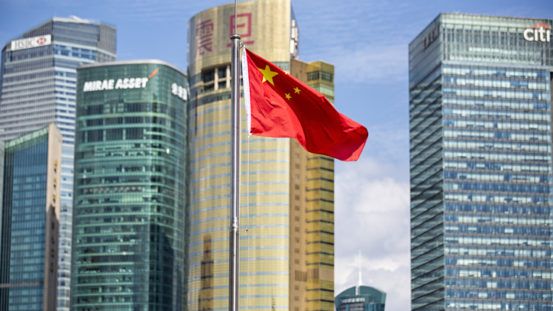The rebound in Asian debt markets should continue as spreads tighten further and the vaccine roll out continues.
And in terms of sectors Chinese property and Thai banks may be the best places to be, argues Joep Huntjens, head of Asian fixed income at NNIP.
Pandemic-related news was the dominant driver for the Asian debt market in 2020 resulting in a dramatic sell off in risky assets in March.
“The Asian debt market has since rebounded, supported by unprecedented fiscal and monetary measures and successful handling of the virus situation in China and other Asian countries. A benign US election outcome and promising vaccine developments have also been contributory factors,” Huntjens says.
Overall, he expects credit metrics to improve gradually in 2021.
“The default rate for Asian high yield companies, which doubled in 2020 to 3.4%, is expected to decline in the coming year. Less supportive onshore funding conditions in China are likely to keep Asian high yield default rates above 2%.”
Esther Law, senior portfolio manager in emerging market debt at Amundi, also points to the improving environment though believes certain caveats will dictate pace of recovery in particular areas.
“Over the last six months, what has changed is increased clarity on covid developments with regards to the vaccine roll-out in Asia. We have also observed how Asian central banks have responded towards the situation, which has provided support to the USD bond market. At the same time, we have turned more constructive on Asia credit, while rebuilding our long positions to ride the recovery story.”
Law expects Asia USD spreads to grind meaningfully tighter over 2021, but the pace of recovery across sectors/countries may be uneven given the potential second wave impact of the covid trajectory; and the low visibility in recovery for certain higher beta parts of the market.
Bonds supply
Huntjens is “modestly positive” about the supply-demand outlook for Asian US-dollar-denominated bonds in the coming year.
“Although gross supply of new Asian USD bonds is expected to remain elevated in 2021, we expect the net supply (gross supply minus bond maturities and coupon payments) to end the year slightly below the average seen over the past couple of years.”
He says the expected supply level should be manageable.
Huntjens stresses that Asian hard currency fund flows have been positive in every month since the March 2020 sell-off. Demand should continue to benefit from relatively attractive spread levels and better control over the virus, resulting in a less uncertain growth recovery trajectory than other regions.
From a valuation perspective, Huntjens believes Asian USD-denominated bonds are attractive compared with US corporate bonds.
“The average spread pickup of Asian investment grade bonds versus US investment grade bonds exceeds 50 bps, compared with an average pickup of 24 bps over the past five years. For Asian high yield bonds, the pickup versus US high yield bonds is currently 295 bps, compared with an average pickup of 101 bps over the past five years.
He adds: “A strong economic recovery in Asia, combined with improving credit metrics and relatively low uncertainty about the virus impact, should allow spreads in the region to tighten in 2021. We expect spread tightening of 30 bps for investment grade bonds and 100 bps for high yield bonds.”
Chinese property
Within the investment universe, Huntjens favours China, and especially its property sector. “The Chinese property sector provides attractive spread levels and has recovered substantially following the early-2020 lockdown. In addition, the new “three red lines” regulations, which set guidelines for developers’ equity, debt and cash ratios, will require increased financial discipline.”
He recommends a selective approach for Chinese high yield bonds outside the property sector, given more challenging onshore funding conditions for these issuers. “Issuers with significant upcoming debt maturities face a higher risk of default in the current environment,” he says.
He also favours Thai exposure. “Although Thailand successfully contained the pandemic, its dependence on tourism led to a substantial correction of Thai USD-denominated bond prices in first-half 2020.
“While spreads have recovered most of the widening, we see room for further tightening when travel restrictions are lifted. Within Thailand we like the banking sector, which is well capitalised. Some of its bonds continue to trade at spread levels well above pre-covid levels.”
Law at Amundi also sees opportunities in Chinese property though stresses the need to tread carefully.
“We see value in Asian high yield bonds given favourable valuations and technicals, as seen in lower expected net supply from the China real estate space due to the government’s three red lines policy.”
She adds: “We like expression of the high yield view via the China real estate sector, though credit selection is important given the recent increase in default cases. To play the vaccine recovery scenario, we also like certain higher beta cyclicals such as gaming and the India NBFC space.”
Staying with India, Huntjens, is cautious on Indian investment grade companies, which have rallied strongly. “At current valuations, these companies do not sufficiently compensate investors for the potential downgrade of India’s sovereign rating. This rating currently stands just one notch above the high yield threshold with a negative outlook from two of the three large rating agencies.”







